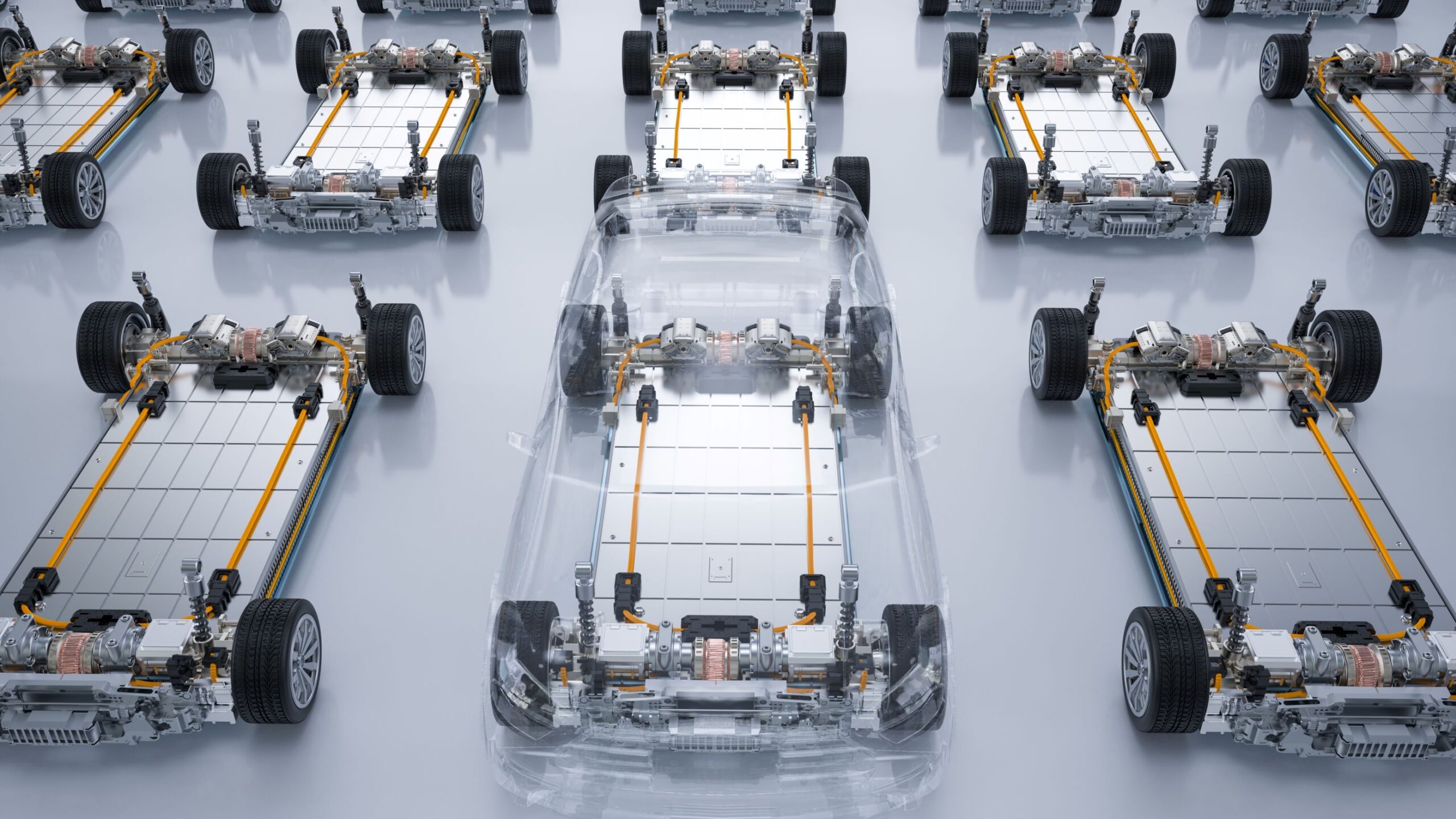- Electric Vehicles in Use to Grow 33% in 2025
- 73% of Electric Vehicles Will Be Battery Electric Vehicles in 2025
- By 2030, Automakers Will Enable the Recycling of 95% of Batteries from Electric Vehicles
By the end of 2025, 85 million electric vehicles (EVs) – cars, buses, vans and heavy trucks – are expected to be on the road, according to the latest forecast by Gartner, Inc.
“Despite several hurdles affecting the EV market over the past few months, we are projecting the number of EVs in use globally to total 64 million units in 2024 and increase 33% in 2025,” said Jonathan Davenport, Sr Director Analyst at Gartner. “Many companies overestimated how quickly the switch to EVs would occur. This caused those companies to delay launching new EV models. The growth in 2025 will be driven primarily by higher EV sales in China (58%) and Europe (24%), which together are projected to represent 82% of total EVs in use worldwide.”
Globally, battery electric vehicles (BEVs) in use are forecast to total almost 62 million units by the end of 2025, an increase of 35% from 2024. Plug-in hybrid electric vehicles (PHEVs) are expected to grow at a slightly slower rate and reach an installed base of 23 million units in 2025, up 28% from 2024 (see Table 1).
Table 1. Electric Vehicle Installed Base by Vehicle Type, Worldwide, 2023-2025 (Single Units)
| |
|
2023 Installed Base |
|
2024 Installed Base |
|
2025 Installed Base |
|
| BEV |
|
32,628,884 |
|
45,872,824 |
|
61,860,183 |
|
| PHEV |
|
13,402,907 |
|
18,159,560 |
|
23,283,006 |
|
| Total |
|
46,031,791 |
|
64,032,383 |
|
85,143,189 |
|
Source: Gartner (October 2024)
In Thailand, more than 77,800 electric vehicles (EVs) are expected to be on the road by 2025, a 49% increase over 2024. Battery EVs will account for 74%, totalling over 57,900 units by the end of 2025.
Table 2. Electric Vehicle Installed Base by Vehicle Type, Thailand, 2023-2025 (Single Units)
|
|
2023 Installed Base |
|
2024 Installed Base |
|
2025 Installed Base |
|
| BEV |
|
24,720 |
|
38,135 |
|
57,926 |
|
| PHEV |
|
9,392 |
|
13,943 |
|
19,880 |
|
| Total |
|
34,112 |
|
52,078 |
|
77,805 |
|
Source: Gartner (October 2024)
Regionally, the ownership of EVs in China is projected to continue to dwarf the rest of the world’s combined installed base through 2025 and likely the next decade. Demand for EVs will steadily grow in Europe and North America, which is projected to account for 36% of global EVs in 2024. By 2025, Gartner estimates 49 million EVs will be on the road in China, compared to 20.6 million EVs in Europe and 10.4 million EVs in North America.
By 2030, Automakers Will Enable the Recycling of 95% of Batteries from EVs to Mitigate the Risk from Raw Material Shortage
With EV sales expected to rise year-over-year, a shortage of raw materials will not be easy to resolve. “A robust recycling effort to take advantage of materials in spent batteries and scrap from the manufacturing production process, which, together with EU efforts to mandate battery recycling, could reduce the need for more mineral excavation,” said Davenport.
“Because concentrations of rare metals in batteries are higher than in natural ores, spent batteries can be seen as highly enriched ore,” said Davenport. “If recovered at large scale, the spent batteries could support the overall commercial viability of EVs by bringing battery prices down. There would be the additional benefit of batteries not ending up being disposed of in unethical manners or put into landfill sites.”
- ในปี 2568 ปริมาณยานยนต์ไฟฟ้าจะเพิ่มขึ้นอีก 33%
- โดย 73% ของรถยนต์ที่ขับเคลื่อนด้วยพลังงานไฟฟ้าทั้งหมดในปี 2568 คือ รถยนต์ไฟฟ้าแบตเตอรี่ (BEV)
- และภายในหกปี (2573) ผู้ผลิตรถยนต์จะสามารถรีไซเคิลแบตเตอรี่ที่ใช้แล้วของรถยนต์ไฟฟ้าได้ถึง 95%
การ์ทเนอร์คาดการณ์ว่าสิ้นปีหน้า (2568) จะมีปริมาณรถยนต์ไฟฟ้า (EVs) จำนวน 85 ล้านคัน วิ่งบนท้องถนน ครอบคลุมประเภทต่าง ๆ อาทิ รถยนต์, รถบัส, รถตู้ และรถบรรทุกขนาดใหญ่
โจนาธาน ดาเวนพอร์ท ผู้อำนวยการอาวุโสฝ่ายวิจัยของการ์ทเนอร์ กล่าวว่า “แม้จะมีอุปสรรคหลายอย่างส่งผลกระทบต่อตลาดรถยนต์ไฟฟ้าในช่วงไม่กี่เดือนที่ผ่านมา แต่เรายังคาดการณ์ว่าในปีนี้ยอดรวมของรถยนต์ไฟฟ้าทั่วโลกจะอยู่ที่ 64 ล้านคัน และจะเพิ่มขึ้น 33% ในปี 2568 ซึ่งผลจากการที่บริษัทหลายแห่งต่างประเมินสูงเกินจริงไปว่าการเปลี่ยนไปใช้รถยนต์ไฟฟ้าจะเกิดขึ้นรวดเร็ว นั่นส่งผลให้ต้องเลื่อนการเปิดตัวรถยนต์ไฟฟ้ารุ่นใหม่ ๆ ออกไป โดยปัจจัยขับเคลื่อนการเติบโตของตลาดรถยนต์ไฟฟ้าในปีหน้านั้น หลัก ๆ มาจากยอดขายที่เพิ่มสูงขึ้นในจีน (58%) และยุโรป (24%) ซึ่งเมื่อนับรวมกันแล้วคิดเป็น 82% ของจำนวนรถยนต์ไฟฟ้าทั้งหมดทั่วโลก”
การ์ทเนอร์คาดว่า สิ้นปี 2568 ปริมาณรถยนต์ไฟฟ้าแบตเตอรี่ (BEVs) จะมีจำนวนเกือบ 62 ล้านคัน เพิ่มขึ้น 35% จากปี 2567 ส่วนรถยนต์ไฟฟ้าปลั๊กอินไฮบริด (PHEVs) คาดว่าจะเติบโตในอัตราที่ช้ากว่าเล็กน้อยและปีหน้าจะมีปริมาณอยู่ที่ 23 ล้านคัน เพิ่มขึ้น 28% จากปี 2567 (ดูตารางที่ 1)
ตารางที่ 1 ปริมาณรถยนต์ไฟฟ้าทั่วโลกจำแนกตามประเภทรถ ระหว่างปี 2566-2568 (หน่วย: ตามจริง)
| |
|
2023 Installed Base |
|
2024 Installed Base |
|
2025 Installed Base |
|
| BEV |
|
32,628,884 |
|
45,872,824 |
|
61,860,183 |
|
| PHEV |
|
13,402,907 |
|
18,159,560 |
|
23,283,006 |
|
| Total |
|
46,031,791 |
|
64,032,383 |
|
85,143,189 |
|
ที่มา: การ์ทเนอร์ (ตุลาคม 2567)
สำหรับประเทศไทย การ์ทเนอร์คาดว่าในปี 2568 จะมีรถยนต์ไฟฟ้า (EVs) มากกว่า 77,800 คัน เพิ่มขึ้น 49% จากปี 2567 โดยรถยนต์ไฟฟ้าแบตเตอรี่จะมีสัดส่วน 74% และมียอดรวมทั้งหมดกว่า 57,900 คัน (ดูตารางที่ 2)
ตารางที่ 2 ปริมาณรถยนต์ไฟฟ้าในประเทศไทยจำแนกตามประเภทรถ ระหว่างปี 2566-2568 (หน่วย: ตามจริง)
| |
|
2023 Installed Base |
|
2024 Installed Base |
|
2025 Installed Base |
|
| BEV |
|
24,720 |
|
38,135 |
|
57,926 |
|
| PHEV |
|
9,392 |
|
13,943 |
|
19,880 |
|
| Total |
|
34,112 |
|
52,078 |
|
77,805 |
|
ที่มา: การ์ทเนอร์ (ตุลาคม 2567)
สำหรับในระดับภูมิภาค การ์ทเนอร์คาดว่าความต้องการเป็นเจ้าของรถยนต์ไฟฟ้าในจีนจะยังคงมีปริมาณมากกว่าจำนวนรถยนต์ไฟฟ้าส่วนที่เหลือของโลกรวมกันยาวไปจนถึงปีหน้า และอาจเป็นเช่นนี้ต่อไปอีกทศวรรษ โดยความต้องการรถยนต์ไฟฟ้าจะเติบโตอย่างต่อเนื่องในยุโรปและอเมริกาเหนือ คาดว่าจะคิดเป็น 36% ของยอดรวมรถยนต์ไฟฟ้าทั่วโลกในปีนี้ (2567) การ์ทเนอร์ประมาณการว่าในปีหน้า (2568) จะมีรถยนต์ไฟฟ้า 49 ล้านคัน วิ่งอยู่ตามท้องถนนในจีน 20.6 ล้านคันในยุโรป และ 10.4 ล้านคันในอเมริกาเหนือ
ภายในอีกหกปี (2573) ผู้ผลิตรถยนต์จะสามารถรีไซเคิลแบตเตอรี่รถ EVs ได้สูง 95% ช่วยลดปัญหาขาดแคลนวัตถุดิบ
ตามที่คาดการณ์ว่ายอดจำหน่ายรถยนต์ไฟฟ้าจะเพิ่มสูงขึ้นทุกปี และการแก้ไขปัญหาขาดแคลนวัตถุดิบถือเป็นเรื่องท้าทาย ดังนั้น “ความพยายามในการรีไซเคิลอย่างจริงจังเพื่อใช้ประโยชน์จากแบตเตอรี่ที่ผ่านการใช้งานรวมถึงเศษวัสดุจากกระบวนการผลิต ผนวกเข้ากับความพยายามของสหภาพยุโรปเพื่อบังคับให้มีการรีไซเคิลแบตเตอรี่ ก็อาจช่วยลดความจำเป็นในการขุดแร่เพิ่มเติมได้” ดาเวนพอร์ตกล่าวเพิ่มเติม
“เนื่องจากความเข้มข้นของโลหะหายากในแบตเตอรี่มีสูงกว่าแร่ธรรมชาติ ดังนั้นแบตเตอรี่ที่ใช้งานแล้วจึงอาจถือเป็นแร่ที่มีความเข้มข้นสูง หากสามารถนำกลับมาใช้ใหม่ได้ในปริมาณมาก ๆ อาจช่วยเพิ่มโอกาสทางการค้าในภาพรวมของตลาดรถยนต์ไฟฟ้า ด้วยการลดราคาแบตเตอรี่ลง นอกจากนี้ยังมีประโยชน์เพิ่มเติมคือ แบตเตอรี่จะไม่ถูกกำจัดด้วยวิธีที่ผิดจริยธรรมหรือถูกนำไปทิ้งในหลุมฝังกลบ” ดาเวนพอร์ตกล่าวสรุป
